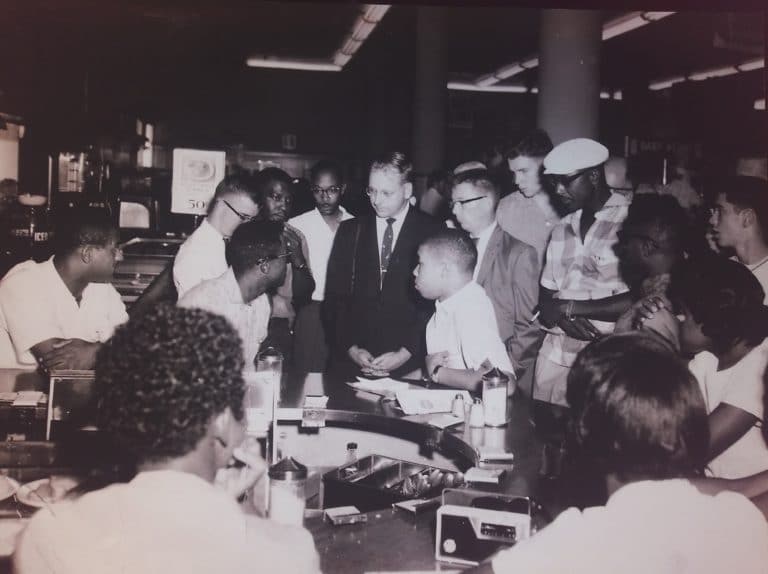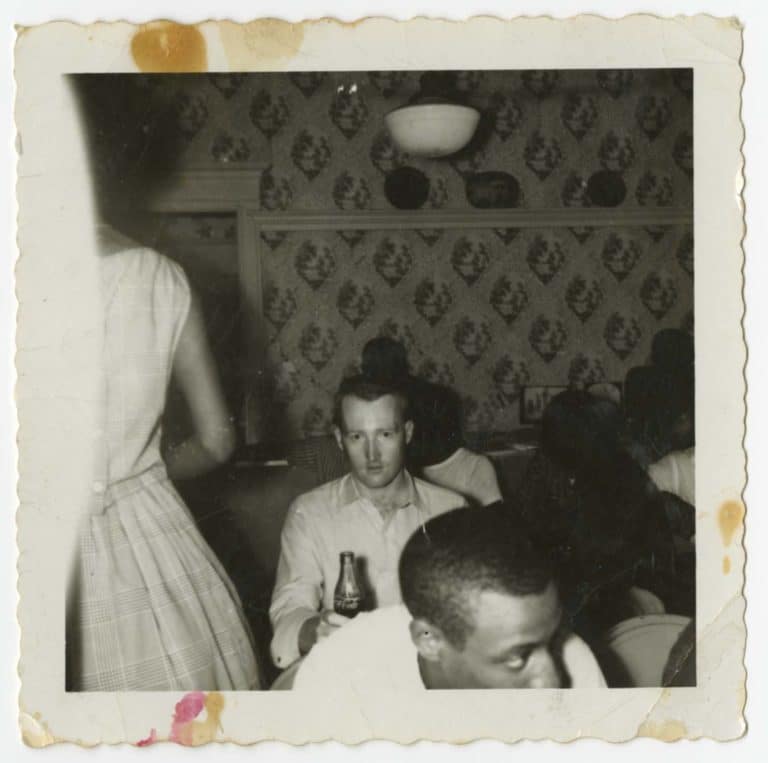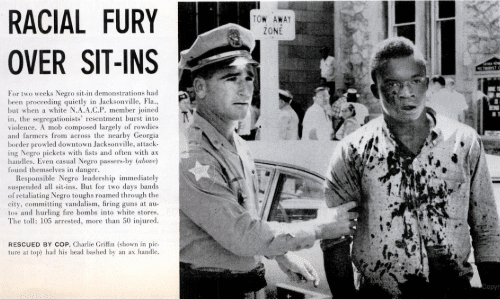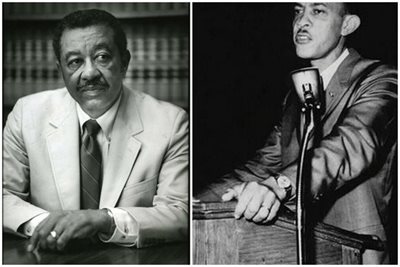Our History
The Jacksonville Branch NAACP will continue to update this page. The history of this branch begins in 1916.
1960’s
Sit-ins become a popular and successful tactic to protest racial segregation in eating and lodging establishments. The sit-in movement began in Greensboro, North Carolina in February 1960. Rutledge Pearson, the Jacksonville Branch NAACP’s Youth Advisor, contacted one of the organizers in Greensboro and brought that suggestion to the youth council members. They agreed that the Jacksonville NAACP Youth Council members would conduct similar sit-ins at the Woolworth’s Department Store and other downtown stores that participated in segregation of lunch counters. Woolworth’s Store was located where the federal courthouse now stands.
There were several protests throughout the city. Some sponsored by clergy and other organizations, but the sit-ins that began on August 13, 1960 at the lunch counter at Woolworth’s Department Store and other stores were sponsored by the Jacksonville Branch NAACP Youth Council. More than 80 Youth Council members participated.

The local media decided to blackout the sit-ins. The Florida Star, the city’s weekly black owned newspaper, did write continuous stories and editorials about the sit-ins.
Richard Charles Parker, a white college student at Florida State University asked to join the sit-ins. He almost lost his life in the process.

On Saturday, August 27, 1960 the Jacksonville Branch Youth Council voted to continue the sit-in at W. T. Grant Department Store. Some council members decided to also continue the sit-in at Woolworth’s. As the youth council members left the stores, they were met by a mob of 300 white ax-handle carrying men who began attacking the students. Charlie B. Griffin, a student who happened to be shopping that day and not a participant in the sit-ins was beaten. Protesters in Hemming Park, located across the street from Woolworth’s Store were attacked by the mob as well. There were no law enforcement officials in sight or if they were, no action was taken to stem the violence. The local press did not write about the beatings, but the national newspapers and nightly news on television continued to report on racial tension in Jacksonville, Florida. This day became known as”Ax Handle Saturday.”

Richard Parker was arrested on August 28, 1960 on various charges and sentenced to 90 days. After discovering Parker was in jail, the attorney for the branch, Earl Johnson, demanded that he see his client. Parker had been beaten and his jaw fractured. After numerous court petitions, the NAACP getting involved and the nation sending money, cards, and books, he was released after serving 60 days.
The sit-ins discontinued and the Jacksonville Branch NAACP and the community agreed to boycott the stores. This strategy led to constructive dialogue and the easing of segregation at lunch counters and other concerns were addressed.
Eventually, Rutledge Pearson became president of the Jacksonville Branch NAACP.


